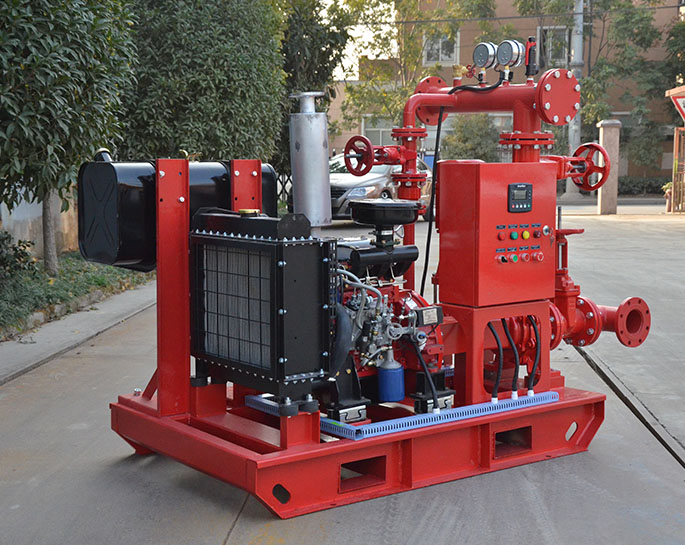Introduction to the characteristics of various commonly used valves for diesel engine fire pumps
Sep 19, 2023
Share:
Diesel engine fire pumps are critical components of fire protection systems, and they rely on various valves to control the flow of water and maintain the system's integrity. Here's an introduction to the characteristics of commonly used valves in diesel engine fire pump systems:
-
Gate Valves:
- Characteristics:
- Gate valves are often used as isolation valves to start and stop the flow of water in the fire pump system.
- They have a simple design with a gate-like wedge that either fully opens or fully closes the flow passage.
- Gate valves provide minimal resistance to flow when fully open.
- They are suitable for on/off applications but are not ideal for throttling or regulating flow.
- Applications:
- Main shutoff valve between the water source (e.g., a water tank or reservoir) and the fire pump.
- Inlet and outlet isolation valves for the fire pump.
- Characteristics:
-
Butterfly Valves:
- Characteristics:
- Butterfly valves have a disk-shaped closure element (the "butterfly") that rotates within the valve body to control flow.
- They are compact, lightweight, and cost-effective.
- Butterfly valves can be used for both on/off and throttling applications.
- They offer relatively low pressure drop when fully open.
- Applications:
- Typically used as discharge valves on the outlet side of the fire pump.
- Suitable for controlling flow during system testing and maintenance.
- Characteristics:
-
Check Valves:
- Characteristics:
- Check valves, also known as non-return valves, allow flow in one direction and prevent backflow.
- They come in various designs, including swing check valves and spring-loaded check valves.
- Check valves ensure that water flows only from the pump to the fire protection system, preventing reverse flow.
- Applications:
- Installed on the discharge side of the fire pump to prevent water from flowing back into the pump when it is not in operation.
- Used to maintain system pressure and prevent damage to the pump.
- Characteristics:
-
Pressure Relief Valves:
- Characteristics:
- Pressure relief valves are safety devices that automatically open to release excess pressure.
- They protect the fire pump and system from over-pressurization.
- These valves are typically set to open at a predetermined pressure threshold.
- Applications:
- Installed on the discharge side of the fire pump to prevent excessive pressure buildup in the system.
- Characteristics:
-
Pressure Reducing Valves:
- Characteristics:
- Pressure reducing valves are used to reduce the pressure of water supplied to certain portions of the fire protection system.
- They ensure that specific sections of the system receive water at the appropriate pressure.
- Applications:
- Often installed downstream of the main pump to provide reduced pressure to sprinkler heads and other components in the system.
- Characteristics:
-
Ball Valves:
- Characteristics:
- Ball valves use a spherical closure element to control flow.
- They are known for quick and reliable operation, with a quarter-turn of the handle.
- Ball valves are suitable for on/off applications.
- Applications:
- Used in various locations within the fire pump system, including control panels, drains, and test connections.
- Characteristics:
Selecting the appropriate valve types and sizes for a diesel engine fire pump system is crucial to ensure proper operation and compliance with fire safety codes and standards. Valves should be regularly inspected, maintained, and tested to ensure they function as intended during emergencies.







